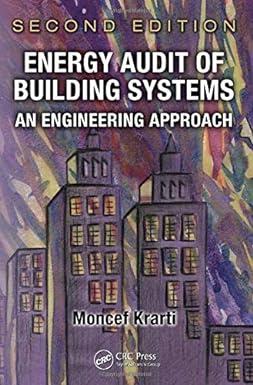

The Kashif Corporation blends three raw materials to produce two products: a fuel additive and a solvent base. Each ton of fuel additive is a mixture of 52 ton of material 1 and 53 ton of material 3. A ton of solvent base is a mixture of 21 ton of material 1,51 ton of material 2 , and 103 ton of material 3 . Kashif's production is constrained by a limited availability of the three raw materials. For the current production period, Kashif has the following quantities of each raw material: material 1 , 20 tons; material 2,5 tons; material 3, 21 tons. Management wants to achieve the following P1 priority level goals. Goal 1: Produce at least 30 tons of fuel additive. Goal 2: Produce at least 15 tons of solvent base. Assume there are no other goals. (a) Is it possible for management to achieve both P1 level goals given the constraints on the amounts of each material avallable? If not, which constraint is the limiting factor? Yes. It is possible to satisfy both P1 level goals. No. There is an insufficient amount of Material 1. No. There is an insufficient amount of Material 2. No. There is an insufficient amount of Material 3. (b) Treating the amounts of each material available as constraints, formulate a goal programming model to determine the optimal product mix. Assume that both P1 priority level goals are equally important to management. (Let x1 be the number of tons of fuel additive produced, x2 be the number of tons of solvent base produced, dpi be the deviation variable which exceeds the value of goal ir, and dni be the deviation variable which is less than the value of goal ir, for i=1,2.) Min s.t. Mate Material 2 (b) Treating the amounts of each material available as constraints, formulate a goal programming model to determine the optimal product mix. Assume that both P1 priority level goals are equally important to management. (Let x1 be the number of tons of fuel additive produced, x2 be the number of tons of solvent base produced, dpi be the deviation variable which exceeds the value of goal i, and dni be the deviation variable which is less than the value of goal i, for i=1, 2 .) Min s.t. Material 1 * Material 2 Check which variable(s) should be in your answer. Material 3 Goal 1 Enter an equation. Goal 2 xi,dnir,dpi0,fori=1,2 (c) Use the graphical goal programming procedure to find the optimal solution for the model formulated in part (b). (x1,x2)=() (d) If goal 1. twice as important as goal 2 , what is the optimal product mix? (x1,x2,(G) The Kashif Corporation blends three raw materials to produce two products: a fuel additive and a solvent base. Each ton of fuel additive is a mixture of 52 ton of material 1 and 53 ton of material 3. A ton of solvent base is a mixture of 21 ton of material 1,51 ton of material 2 , and 103 ton of material 3 . Kashif's production is constrained by a limited availability of the three raw materials. For the current production period, Kashif has the following quantities of each raw material: material 1 , 20 tons; material 2,5 tons; material 3, 21 tons. Management wants to achieve the following P1 priority level goals. Goal 1: Produce at least 30 tons of fuel additive. Goal 2: Produce at least 15 tons of solvent base. Assume there are no other goals. (a) Is it possible for management to achieve both P1 level goals given the constraints on the amounts of each material avallable? If not, which constraint is the limiting factor? Yes. It is possible to satisfy both P1 level goals. No. There is an insufficient amount of Material 1. No. There is an insufficient amount of Material 2. No. There is an insufficient amount of Material 3. (b) Treating the amounts of each material available as constraints, formulate a goal programming model to determine the optimal product mix. Assume that both P1 priority level goals are equally important to management. (Let x1 be the number of tons of fuel additive produced, x2 be the number of tons of solvent base produced, dpi be the deviation variable which exceeds the value of goal ir, and dni be the deviation variable which is less than the value of goal ir, for i=1,2.) Min s.t. Mate Material 2 (b) Treating the amounts of each material available as constraints, formulate a goal programming model to determine the optimal product mix. Assume that both P1 priority level goals are equally important to management. (Let x1 be the number of tons of fuel additive produced, x2 be the number of tons of solvent base produced, dpi be the deviation variable which exceeds the value of goal i, and dni be the deviation variable which is less than the value of goal i, for i=1, 2 .) Min s.t. Material 1 * Material 2 Check which variable(s) should be in your answer. Material 3 Goal 1 Enter an equation. Goal 2 xi,dnir,dpi0,fori=1,2 (c) Use the graphical goal programming procedure to find the optimal solution for the model formulated in part (b). (x1,x2)=() (d) If goal 1. twice as important as goal 2 , what is the optimal product mix? (x1,x2,(G)








